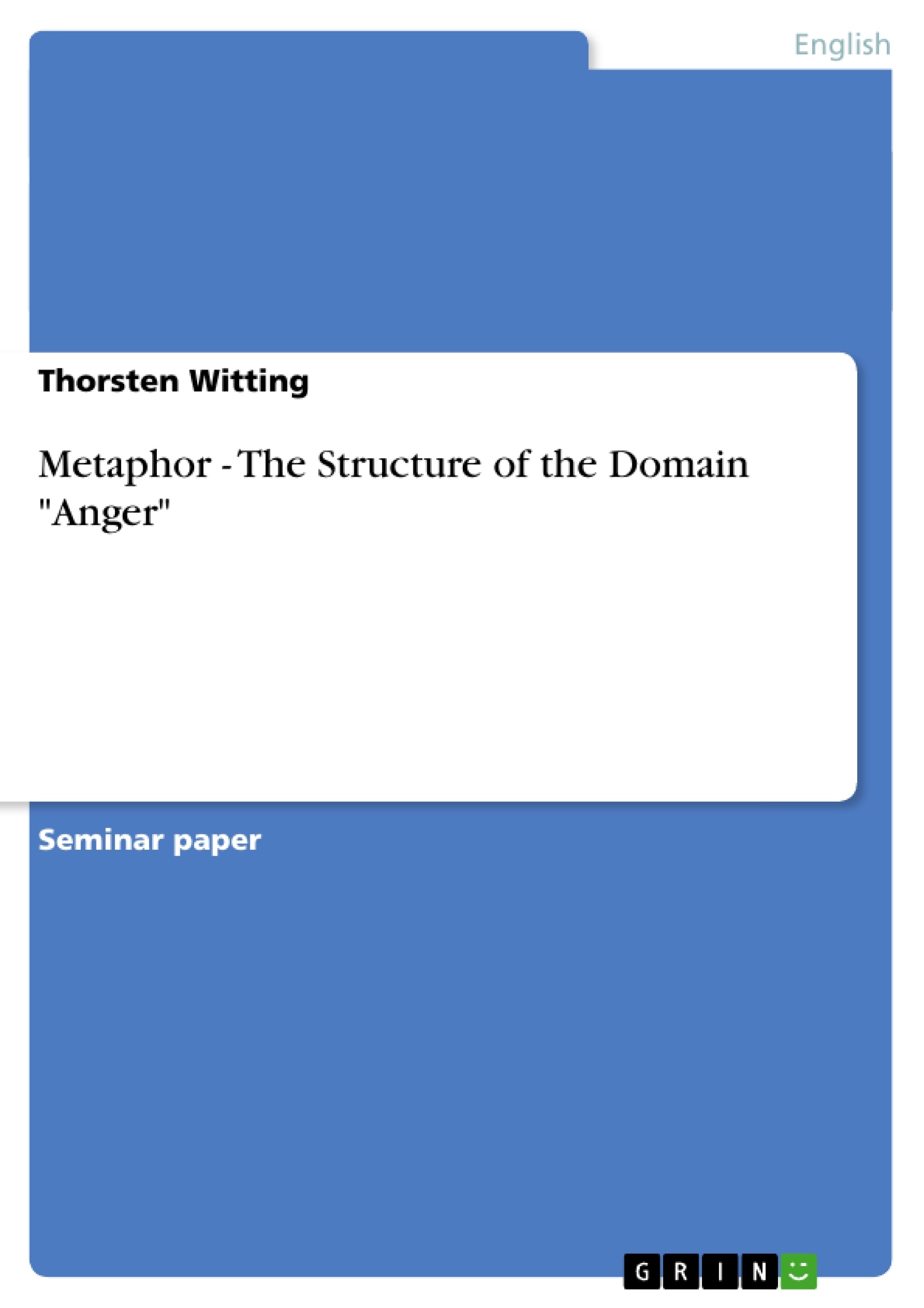The general idea of this paper is to compare different approaches to metaphor, viz. lexicographical definitions by means of dictionaries, specialists′ definitions by means of Lakoff and Johnson′s definition, theoretical background (Turner, Langacker and Sweetser) and lexical definitions by Kövecses. These approaches seem to be quite contradictory at first glance and the question whether it is a contradiction or not will be addressed in the fourth chapter. The definitions will be discussed in the first chapter, together with a short definition of the crucial terminology.
An important aspect of metaphors according to Lakoff and Johnson is the transfer of meaning form a target domain to a source domain. The second chapter is about the internal structure of domains, based on Langacker′s approach, and about the process of the transfer of meaning used in metaphors. This transfer is called mapping and the description rather than definition is based mainly on Turner and Sweetser. Another important aspect of metaphor according to Lakoff and Johnson is the experiential basis used in the meanings expressed, which will be based mainly on Sweetser.
The case study is about Kövecses′ concept of the conceptual metaphor ANGER, a sub-category of the higher-up domain EMOTION, is based upon what Kövecses calls the "prototype scenario" - i.e. the probable way anger builds up, is conceived of and expressed in language and bodily experience.
Table of Contents
- INTRODUCTION.
- DEFINITIONS OF METAPHOR.
- Dictionaries.
- Lakoff and Johnson.
- Turner's approach.
- TERMINOLOGY.
- Conceptual Metaphor
- Metonymy.
- Folk Theory.
- THEORETICAL BACKGROUND.
- INTRODUCTION.
- INTERNAL STRUCTURE OF DOMAINS.
- MAPPING.
- EXPERIENTIAL BASIS
- FOLK THEORY AND METONYMY.
- CASE STUDY: THE STRUCTURE OF ANGER
- THE CONCEPT ANGER.
- STAGES OF ANGER.
- THE PROTOTYPE SCENARIO
- THE CONCEPTUAL STRUCTURE OF ANGER.
- CONCLUSION.
Objectives and Key Themes
The primary goal of this paper is to analyze and compare various perspectives on metaphor, ranging from dictionary definitions to specialized interpretations by Lakoff and Johnson, theoretical frameworks developed by Turner, Langacker, and Sweetser, and lexical analyses by Kövecses. The paper aims to explore the potential contradictions between these approaches and address the question of whether they truly represent opposing viewpoints or instead complement each other. This analysis will be further elaborated on in the conclusion.
- Metaphor as a figure of speech and a cognitive process.
- The transfer of meaning from a source domain to a target domain in metaphor.
- The internal structure of conceptual domains and mapping processes in metaphor.
- The experiential basis of metaphor and its connection to our understanding of the world.
- The conceptual structure of ANGER as a sub-category of EMOTION, based on Kövecses' prototype scenario approach.
Chapter Summaries
The first chapter presents a comparative analysis of dictionary definitions of metaphor, focusing on the layman's understanding of this literary device. It then delves into the specialized definition proposed by Lakoff and Johnson, contrasting it with traditional views. The chapter concludes with an examination of Turner's approach to metaphor, highlighting its reconciliation of the seemingly opposing perspectives of dictionaries and Lakoff and Johnson.
The second chapter delves into the theoretical background of metaphor, introducing the concept of the internal structure of conceptual domains based on Langacker's work. This chapter further explores the mapping process that governs the transfer of meaning in metaphors, drawing heavily on the contributions of Turner and Sweetser. The importance of the experiential basis of metaphor, as emphasized by Lakoff and Johnson, is also discussed, drawing mainly on Sweetser's insights.
The third chapter presents a case study on the conceptual metaphor ANGER, a sub-category of the larger domain EMOTION. This analysis utilizes Kövecses' prototype scenario approach, exploring the probable stages of anger development, its conception, and its linguistic and bodily expression.
Keywords
Key terms and concepts explored in this paper include metaphor, conceptual metaphor, metonymy, folk theory, domain structure, mapping, experiential basis, prototype scenario, and the conceptual metaphor ANGER.
- Quote paper
- M.A. Thorsten Witting (Author), 2003, Metaphor - The Structure of the Domain "Anger", Munich, GRIN Verlag, https://www.grin.com/document/21212




